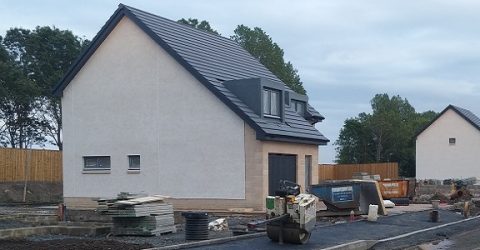Buying a new-build property? Check your home broadband options

Fast and efficient broadband benefits individuals and the wider economy, which is why the UK Government is committed to providing faster internet connections nationwide.
Most people find a slow connection frustrating, but slow home broadband can damage more than just your mood.
It can also affect your work – and even your wealth.
Millions of people in the UK work from home at least part of each week, and they need a dependable broadband connection to do so.
What’s more, research suggests that poor broadband speeds could reduce the value of your home by up to 25 per cent.
So it may surprise you to hear many new homes don’t have superfast broadband infrastructure integrated into them – resulting in slow or patchy broadband from day one.
Even when a superfast infrastructure is in place, the developer may have limited it to just a few providers – preventing residents from getting the best deals.
Why is this happening, and what’s being done about it?
Restricted provision
An internet connection is comparable to utilities like gas or water, in that new-build housing is designed with some connectivity in mind.
Even this may lead to complications, however.
While 11.5% of new builds in 2018 had no access to superfast broadband (and only 61.6% had full fibre), some have state-of-the-art connectivity including Fibre to the Premises (FTTP).
Problems arise when access to that fibre is restricted to a few providers, who may not be the most competitive.
MoreDo all new homes come with full-fibre broadband?
Their broadband services may be costly, impose certain restrictions, or come without additional services like TV and phone lines.
The government recognises there are problems with home broadband in new estates, and wants to implement changes.
The National Planning Policy Framework promotes full-fibre broadband, calling for services to be made available to everyone from a range of providers.
Last October, the Government held a public consultation on the provision of top-class home broadband for new homebuyers.
That document contains proposals to increase connectivity for new-build occupants, as well as competition between broadband providers.
But while we wait for the official response, what can new house buyers do?
Getting better new-build broadband
If you want to buy or rent a property under construction or at the planning stages, ask the developer what will be provided in terms of home broadband.
Find out whether provision is restricted to particular companies and whether broadband is Fibre to the Cabinet (FTTC), FTTP or something else.
If you are already in a new-build and having problems, talk to current – and alternative – providers.
If they won’t help, you could abandon traditional home broadband and replace it with a mobile broadband contract.
Most mobile networks sell mobile dongles or compact MiFi hubs (connecting wireless devices), and some packages offer unlimited data.
You can access mobile broadband through the MiFi router, or use your phone as a hub.
There’s also satellite broadband, if you’re legally able to put a dish on the side of your home.
The UK has relatively few providers of satellite broadband, though innovations such as pay-as-you-go contracts are offered.
Many people living with slow broadband speeds in new estates are frustrated by their lack of connectivity, which is completely reasonable. It’s literally a postcode lottery.
However, solutions are already available, and the Government is keen to implement them. When they do, new homes could take the UK into the information superhighway’s fast lane.






